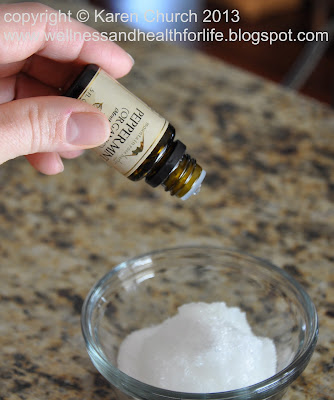You may wonder how making your own laundry detergent could be healthier than the store bought brands. So since you asked, I'll tell you.
For starters, the synthetic fragrances are usually petroleum based, and are known endocrine disruptors. That means they can mess with your hormones. I don't know about you, but I can be hormonal enough without any help from my laundry detergent!
Then there is the endless list of chemical names that even I, who started out as a chemistry major, have a hard time pronouncing. Suffice it to say that most of them contain warnings about their adverse effects.
Since it would be
Go ahead and check out your brand of detergent. I'll wait for ya...
Ok. So now that you know how harmful your detergent is, let's get started on how to make your own healthier alternative.
You will need borax, super washing soda (not baking soda), and a bar of pure castile soap (and a 5 gallon bucket and an empty laundry detergent container). I used Dr. Bronner's unscented bar soap, but you could use any scent that suits your fancy. I will urge you not to use Fels-Naptha bar soap since it is a petroleum product. Most of the other home made recipes call for this soap, and I used it for my first batch, but then discovered what it is made out of. The castile detergent works just as well, and is not petroleum based - better for you and the environment!
Grate the bar of soap into a large pan.
Add 4 cups of hot tap water to the grated soap, and heat over medium low heat, stirring until soap is dissolved.
Meanwhile, fill a 5 gallon bucket half full with hot tap water. Add 1/2 cup borax and 1 cup of washing soda. Stir until dissolved.
When soap is dissolved, add to bucket, stirring to combine. Fill bucket to top with more hot tap water.
Cover bucket with a lid, and let it sit overnight to cool.
In the morning, your detergent will be a thick gelled glob. You could try to stir it to break it up, but I found the easiest way is to used a grout mixer.
I got one similar to this one at Home Depot for a few bucks. Just go slow when you hook it up to your drill or you will have a huge mess (don't ask!).
Then transfer the detergent to your empty cleaned out container, and you are good to go. I have been using my own home made detergent for almost two years, and it works just as well if not better than the store bought brands I had been using. This 5 gallon bucket of detergent makes enough detergent for 320 loads, and lasts our family of four an entire year! And remember...only .02 per load.
Here is the recipe...
Homemade Laundry Detergent with Castile Soap
1/2 c. borax
1 c. super washing soda
1 bar pure castile soap (scented or un- your choice)
5 gallon bucket
empty cleaned out detergent container
1. Grate soap into large pan. Add about 4 cups of hot tap water and heat over medium low heat, stirring until all soap is dissolved.
2. Meanwhile, fill a 5 gallon bucket half way with hot tap water. Add borax and washing soda, stirring until dissolved.
3. When soap is dissolved, add to bucket, stirring to combine. Fill bucket to top with hot tap water. Cover with a lid, and let sit overnight to cool.
4. Stir or use grout mixer to break up gel, and transfer to empty detergent container.
5. Shake before each use.
For top load washer, use about 1/2 c for a full load
For front load washer, use about 1/4 c for a full load
I have used homemade detergent in my front load washer for almost two years, and have not had any problems. It is low sudsing by nature, so it shouldn't be harmful.
If you are nearing the end of your store bought detergent or even if you aren't, I urge you to try making your own. You can feel good about keeping the plastic container out of the recycle bin, and it really is a healthier alternative for you and the planet!
In Wellness,
K













